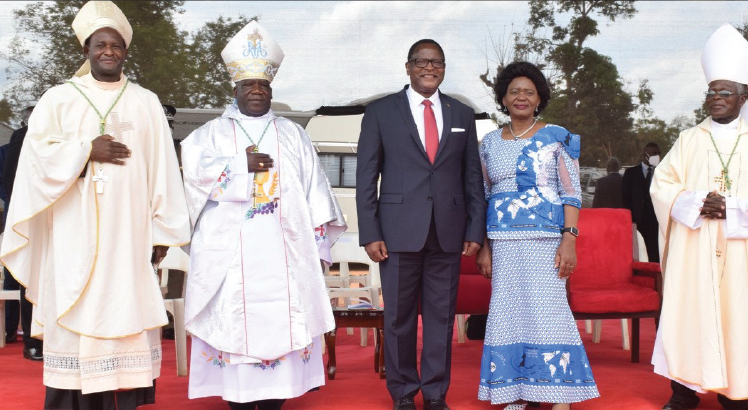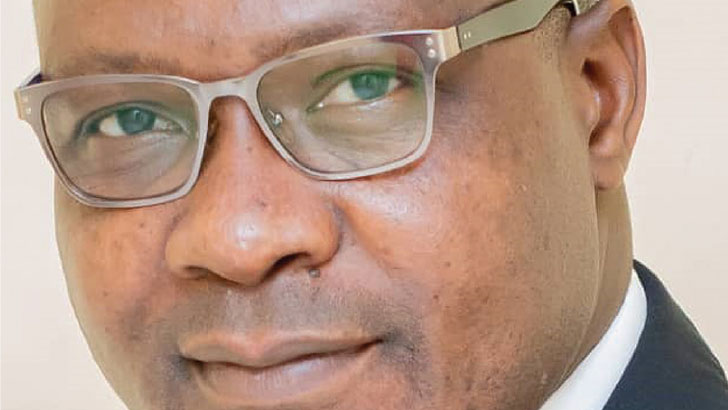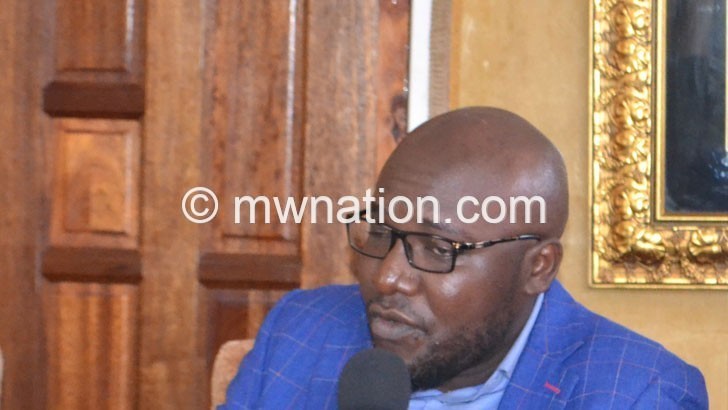We don’t know what is coming
Donors are now racing to limit the effects of a devastating famine that was entirely preventable.No tears come to Ness Rabison’s eyes as she wails indignantly in her hospital bed. Her tiny body is too parched. United States of America-based Foreign Policy reporter AMANDA SPERBER writes.
The 11-month-old is swaddled next to her brother Yesaya, who is 4 years old but looks about 2. Five days prior, on empty stomachs, their parents, Faida and Shati, biked 15 miles to the Ngabu hospital in southern Malawi, joining a flood of subsistence farmers uprooted by the worst drought to strike southern Africa in more than three decades.
Now both children are being treated for severe acute malnutrition, a condition characterized by dramatic physical wasting that has already claimed the lives of three children at the Ngabu hospital this year.
“They usually die right away,” Getwell Mgiwedula, the hospital’s aptly named director, said of children who have been admitted under similar circumstances.
Tiny, landlocked Malawi declared a state of emergency in April, when it became clear that lack of rainfall was threatening crops in 40 percent of the country. Since then, the drought has pushed more than half a dozen countries in the region to the brink of famine: Angola, Lesotho, Madagascar, Mozambique, South Africa, Swaziland, and Zimbabwe all face significant food shortages. Zambia has fared slightly better, but it too was forced to ban exports of maize, a precaution that caused additional hardship in nearby countries its farmers used to feed.

The World Food Program, the main United Nations (UN) agency fighting hunger, has declared the drought in southern Africa a level three emergency, its highest emergency designation, putting it on par with the crises in Syria and Yemen. The organization is racing to provide cash and food assistance to those affected by extreme weather. By January 2017, it aims to have assisted more than 13 million people in seven different countries.
“There is a famine in Malawi,” said Elisha Kapalamula, the humanitarian and emergency affairs manager at World Vision, a religious charity. “If aid was pulled out of Malawi today, then a lot of people would starve to death.”
Regularly ranked among the 10 poorest countries in the world, Malawi is dangerously dependent on rain-fed subsistence farming. Eighty-five percent of Malawians make a living this way while agriculture accounts for more than 40 percent of the country’s GDP. The majority of farmers eat what they grow and, in a good season, try to sell the surplus for cash. This almost total dependency on domestic food production has pushed an estimated 6.5 million people to the brink of starvation. Even those with the money to buy food find bare marketplace shelves and exorbitant prices for what little sustenance remains.
Malawi’s farmers have grown increasingly vulnerable in recent decades, as shifting weather patterns have made the rainy seasons shorter and less dependable, with extreme, devastating floods when the rains do come. Until recently, the country had the highest annual deforestation rate in Africa at 2.8 percent. That number has slipped to around 1 percent, according to Malawian officials, because there are so few trees left.
This year’s drought is the result of El Niño weather patterns linked to the periodic warming of surface waters in the equatorial Pacific. Scientists say it is too early to tell if this year’s extreme fluctuations are the result of climate change or if they are just the natural ebb and flow of the weather pattern.
“Some scientists believe there is a link, and it makes some sense,” said Fred Pearce, who has written numerous books on climate change. “After all, the phenomenon is caused by a buildup of heat in the equatorial Pacific, and global warming is heating the oceans.”
Either way, millions of people are suddenly struggling to survive. Right now in Madagascar, people are living off cactus leaves. Swaziland has seen half of its water sources dry up since the beginning of the year. And eight of South Africa’s nine provinces have declared a state of emergency because of the drought, a dire warning sign in a country that has traditionally been the region’s breadbasket.
“We are always afraid. We don’t know what is coming tomorrow,” said Nastazia Maxwell, a widow with two children in Malawi’s southern Chikwawa region. She had eaten only a few bites of porridge made from ground corn husks that day. Her stomach constantly feels empty, she said, and she has no energy to work.
According to the UN’s Food and Agriculture Organization, almost half of children in Malawi under the age of 5 are malnourished, a condition that can cause stunted mental and physical development. That in turn affects lifelong productivity, slowing economic growth and placing additional health-care demands on the state.
Like many other women across the region, Catherine Lungu has struggled to nurse her 6-month-old baby because malnutrition has dried up her mammary glands. The drought is taking a toll on the next generation in other ways, too. With no income to pay school fees, parents are increasingly pulling their children out of the classroom. Mary Makuwila, who lives in the village of Masala in the Zomba region north of Chikwawa, had to pull her daughter out of secondary school because she couldn’t afford tuition.
“Now she sits idle at home,” she said.
The devastation wrought by this year’s drought was predictable — but it was hardly inevitable. Experts say countries like Malawi could pursue a variety of climate adaption strategies in order to stave off the effects of climate change, as well as weather fluctuations like El Niño. One is protecting forests, which encourage rainfall and prevent flooding of agricultural land. Another is getting fertilizer into the hands of subsistence farmers, something that has helped boost Malawi’s agricultural yields in the past, even when rainfall was scarce.
But all of this costs money, which has been in short supply since 2014, when Britain, the European Union, and other donors suspended more than $150 million in annual assistance to the Malawian government over a $50 million graft scandal known as “Cashgate.” The financial assistance was cut off during the administration of Joyce Banda, the country’s first and only female president who was in office during Cashgate, but hasn’t been reinstated under her successor’s administration.
Since 40 percent of the Malawian government’s budget had been covered by foreign assistance, the sudden cut has taken a heavy toll. Werani Chilenga, the chairman of the National Assembly’s Committee on Natural Resources and Climate Change, says funds for forest conservation have been slashed. “By the end of the day, we will lose all these forests, and we will be [poorer] than we already are,” he said.
The government has also been forced to defund a fertilizer subsidy program aimed at farmers with small plots of land that was once hailed by development economist Jeffrey Sachs as a “key for Africa’s future development and escape from poverty.” Introduced in 2005, the subsidy led to a doubling of the maize harvest in just the first year.
Stephen Carr, a British agronomist who has lived in Malawi’s Zomba region since 1989, says crops can grow even in extreme weather as long as the soil is well nourished with fertilizer. Even though this year was the driest in decades, those farmers with well-fed plants had bumper crops, he said in an email to Foreign Policy.
Carr questioned the wisdom of cutting aid that underwrote the subsidy and then proceeding to fund humanitarian assistance.
“The donors are quite prepared to supply famine relief at several times the cost of subsidizing fertilizer but will not provide any funding to the budget to enable the government to help farmers produce food for themselves,” he wrote.
For Ness Rabison and her brother Yesaya, that’s now a matter of life and death. Their mother, Faida, and her husband sit on opposite beds in the hospital ward, each cradling a child, each looking overwhelmed.
“I’m not happy,” Faida says. “I don’t like seeing my kids like this.” n





